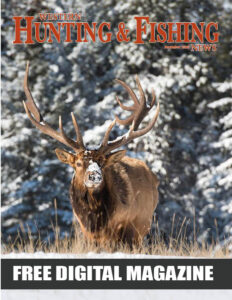2021 Spring Mack Days March 19 – May 16th – Enter now
2021 Spring Mack Days News
2021 Spring Mack Days on Flathead Lake will begin Friday March 19th and end on Sunday May 16th. This lake trout angling event is sponsored by the Confederated Salish and Kootenai Tribes and sanctioned by Montana Fish, Wildlife, and Parks with Up to $225,000 in Cash and Prizes to be awarded to the lake trout anglers at the conclusion of the event. It is an angler’s dream, fifty-nine total days of lake trout fishing on Flathead Lake, fish one day or every day! All it takes is one fish to win a cash prize in the lottery style drawing.
The first Mack Days Fishing Event was developed in 2002 for fishing enthusiasts of all ages and skills to participate in and support the conservation effort to increase native fish populations in Flathead Lake and slowly decrease the numbers of non-native lake trout. Native bull trout and west slope cutthroat trout dominated the lake for hundreds of years before the lake trout exploded in the 60’s and 70’s and took over as the dominate fish. Native fisheries of Flathead Lake continue to be an important part of the fishing heritage of the Confederated Salish and Kootenai Tribal people, as well as anglers within the state of Montana.
The Confederated Salish and Kootenai Tribes are committed in this effort and continue to sponsor two Mack Days events per year, every spring and fall.
During the first Mack Days event in 2002, a total of 888 lake trout entries were turned in over fifteen days of fishing. There were eighty anglers registered. The largest number of fish entries, occurred during the 2019 Spring Event with 40,362 lake trout entries turned in. Two hundred nineteen anglers caught one or more lake trout out of the six hundred fourteen anglers that were registered for the event during forty eight days on the lake.
Come out and try your hand at fishing for lake trout on Flathead Lake, get your lines in the water and test your skills at reeling in a winning catch. It could be a tagged fish, maybe a “lunker” that may qualify as the largest fish, or a smallest fish prize winner. Entries continue to be taken until the last day of the current event and there is no entry fee! Enter on or before March 17th and catch one lake trout during the event to qualify for a special $200 drawing. There is an entry page for anglers on the website under the events tab to qualify for this drawing.
There will be 1-$10,000 tagged lake trout, 3-$5,000, and 5-$1,000 plus over 9,000 with values from $100 to $500. Remember that during the 2020 Spring Mack Days event, the $10,000 tagged lake trout was turned in by angler Matt Guckenberg of Kalispell! Who will be the next lucky angler? Any angler loves to find one on the line, the average number of tagged fish turned in during a Spring Event is between 70-90 lake trout. Remember not every lake trout with a clipped adipose fin will have a tag, they have to be scanned and the tag must be detected before you know for sure it is a tagged fish.
The Confederated Salish and Kootenai Tribes realize the costs associated with fishing these events, with the number of hours and days that anglers put in. The investment for equipment, fuel, food, etc. add up and this is why bonus drawing amounts are set up to correlate with fish entire totals turned in by anglers. These drawings help pay anglers for some of the expenses of helping with the management of these fish. There will be thirty-five lottery drawings that will begin at $450 and go up to $1,000, these will be drawn at the conclusion of the event along with the thirty-two merchandise cash drawings from $50 to $500. The total amount of both drawings totals $29,800!
Bonus dollars are earned, as an angler’s total fish entries goes past 10 lake trout. For every lake trout you enter in the event your number of fish will be entered in a file to equal the number you have caught. A computer generated drawing will chose the winning numbers for the lottery drawings. All anglers are limited to two lottery drawings and two cash merchandise drawings wins. Check out the prizes and categories available on the website www.mackdays.com. There are several categories an angler can move into as their fish entries increase. For example, if an angler catches 11-30 fish, they earn $35, if they catch 61-100 fish, they earn $135, if they catch 101-150, they earn $210, and on up. For more information, check out the chart on the website. Click on the events tab for the drop down pages.
Another bonus added to the events, is every boat captain that catches a lake trout receives a special entry for that day, plus they receive one entry for every angler on their boat who also catches a lake trout. Four-$250 drawings are pulled at the end of the event for the Captains Prizes. There will be five-$100 drawings each weekend from each lake trout entered. There will also be a computer generated drawing for $4,500 at the conclusion of the event. Every 10 lake trout entries per day gets an angler a ticket for a Siberian Cooler Drawing. There will be a special drawing on Easter and Mother’s Day for a cooler, sweatshirts, and fishing poles.
Dedicated anglers of all ages, both male and female compete in a friendly, but intense competition for a spot in the Top Twenty, and are hoping to win from $100 to $900. This total depends on the angler’s fish entry totals and averages on the last day of the event. Anglers love the intense competition and notoriety of their names listed in the Top 20.
Jason Mahlen has the target on his back as the leading Spring Mack Days angler. He has placed first in the Spring Event seven times consecutively for the past three years in a row. His highest total for an event is 2,134 lake trout entries in 2019. The top angler in each event receives a coveted Top Angler Jacket, Mike Benson ties Jason with seven wins in the Fall Mack Days Events, and they love the competition! One hundred lake trout is the daily limit on Flathead Lake. Jason has turned in several one-hundred fish days during the events along with other anglers, however, he has the record of fifteen during the 2019 Spring Event. His average that year was 100.0 for the fifteen day average. Catching that many lake trout requires that everything goes just right all day long!
These anglers time themselves and they know how long to fish a spot before moving to another. They may move from spot to spot all day long or they may stay in one area, depending on the bite. They time how many fish per hour they need, and many set a goal for a total that they want to reach by the end of the event. You can be an intense angler, or fish just for the thrill of being out on the lake and enjoying the sport of fishing, fish one day or every day!
There are categories for Youth 12 & under, Youth 13-17, a ladies category, and 70 and over. Several of these anglers are now in their 80’s and a few are pushing 90 years old. Larry Karper of Florence is the holder of most wins in the 70 and over group, this just goes to prove that you can’t stop fishing or you might grow old. They are the best and they just keep on fishing. Lady anglers will be vying for the top spot in that category also. Julie Perkins of Kalispell has been the top lady angler six times in past events. Laurie Kreis of Huson has a few wins in this category along with Julie Vacca of Missoula. The Ladies put in a lot of long tough hours fishing and winning along-side their partners.
Don’t be intimidated by the high numbers of entries that some anglers turn in, remember that all it takes is one fish to win a cash prize in the lottery style drawing! There have been anglers who have caught one fish and it happened to be a tagged fish or they only have a few tickets, but win big in the lottery drawings. Winner-winner with only one lake trout! Two of those had a $1,000 tagged lake trout. It takes everyone with one fish, one hundred fish, or one thousand fish to make these Mack Days events successful.
Write your own story-go out and stick to what you know about fishing Flathead Lake, make changes when you can as you learn what others may be trying. Have fun and be part of making a difference for the future of native fish in the lake. For tips on lake trout angling go to the website www.mackdays.com and check out the fishing videos. Make sure you know how to identify the native fish that need to be returned to the lake. If you are in doubt of any fish put it back. Stay tuned to the weather conditions and have your safety equipment on board. —–Tight lines everyone!




